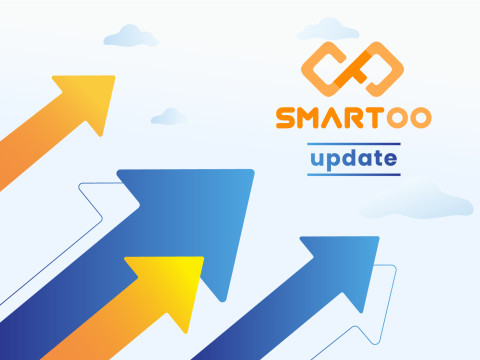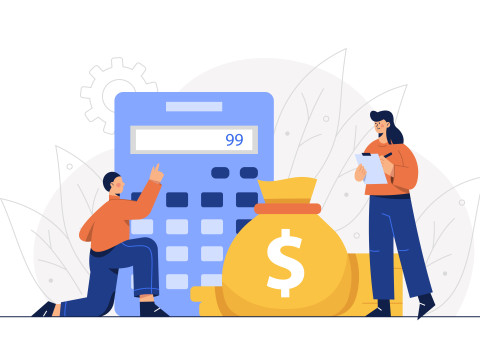Stages of Digital Agency Growth: Insights for Scaling your Agency

In this article, we’re going to discuss the stages of growth that digital advertising, development, design or marketing agencies go through. Whatever stage your agency may be in at present, we hope this article helps propel your agency forward.
Ready? Let’s begin.
Agencies help countless businesses boost their brands and presence in the market. With their tech-savvy minds and in-demand specializations ranging from web, social media, digital marketing & advertising, as well as SEO– it’d be safe to say that they really do move industries forward.
So how does something with that level of influence on the industries that shape our society start out?
Taking the leap to leave a steady 9-5 and starting an agency can be quite intimidating. Sometimes that step is forced upon the owner, sometimes agencies are started by partners, some even fresh out of education.
A quick Google search can lead you to stories of agency owners who didn't really plan on owning an agency or being in this industry. More than one of Smartoo’s clients started freelancing from home as they figured out what it is they really want to do with their lives. However, what they thought was just a passing thing became bigger. Before they knew it, more clients poured in, things got busy and what would have been just a temporary pursuit evolved into something more permanent.
Smartoo’s founder Matt, is another case in point that a lot of agencies out there began as something that just happened. He grew his web design and development agency from taking on a web project on Elance (now Upwork) so he could quickly learn coding for his future start-up ideas. Matt is certainly not alone in this experience.
It would be interesting to learn what different stages of growth apply to agencies. What stage is your agency in and how can you move to the next stages? Let’s find out!
Stages of Digital Agency Growth
In the May 1983 edition of the Harvard Business Review magazine, researchers Neil C. Churchill and Virginia L. Lewis explored The Five Stages of Small Business Growth.
There’s no doubt that today’s trends and industries are different from the time their research was published. However, business principles don't change and their research on small businesses is still surprisingly accurate. In the next sections, we will dive into the stages of digital agency growth using Lewis and Churchill’s research on the stages of small business growth as our foundation.
With the many complexities of different business models and industries, it can be difficult to define the boundaries of the stages of growth that businesses go through. Nevertheless, Churchill and Lewis were able to identify and define these stages as the following: the Existence stage, the Survival stage, the Success stage (which has substages: Success-Disengagement and Success-Growth), the Take-off stage, and last– the Resource Maturity stage.
Let’s discuss each stage in the context of agency growth.
Stage 1: Existence
The Existence stage, among small businesses, is characterized by a simple organizational structure where the main problems are obtaining customers and/or fulfillment. There is usually just the business owner, who does all the hard work. Even if there are hired team members at this early stage, the owner still does the bigger workload and he also personally supervises those he hires. In this new business, there won’t be any formal planning or solid systems in place and therefore it's a struggle to hit desired targets for customers, ROI and quality of product/service. New clients here would also be mostly either from linkedin hunting or referrals from existing clients. A 2021 Gartner survey found that work hour flexibility is the #1 reason for increased productivity in the workplace.
A Digital Agency in the Existence Stage:
Here, the new business has yet to establish one valued service of good quality that is in demand. Usually, if digital marketing agencies can offer a good quality service they have solved their fulfillment problem, hopefully it’s only a matter of time before they reach customers that can bring them to the next stage. Some niches are easier than others to reach the desired customers and a topic for future articles.
Agencies offering services that require fewer skill sets should find it easier to progress to the next stage. An example could be an agency that offers logo design services that could be mostly done by the agency owner, allowing the owner to grow his agency with fewer overhead and complexity.
Partnerships can increase the skill sets of a startup agency but partners should still be considered overheads even if they don't take any salary yet.
Reasons that agencies remain at the Existence Stage include trying too hard to please customers by offering too many services or keeping prices too low.
The goal of escaping this stage is to become good enough at one or more services to attract enough well paying customers BEFORE the owner/s run out of money or patience.
Stage 2: Survival
Next is the Survival stage, which is typically within the two to five years of experience in the industry. This is when the business has already been proven to be viable and has begun to increase its marketer count. The product/service offered is niche enough that it's something that people actually want and need. At the same time, the business/brand has successfully attained customers. In other words, it has broken into the market, and found a workable product (service) market fit.
At this point, the direction and management of the business is still mostly reliant on the owner. The Survival stage business generates a steady cash flow and can sustain operations and maybe even earn some profit.
A Digital Agency in the Survival Stage:
For some digital agency owners, this stage is already their end goal. They are in charge of their small agency, doing what they love and making good money. Sure, it's hard to take too long a holiday without affecting business and the sales / fulfillment cycle can get tiresome at times - still there's no denying the benefits of being your own boss.
Agencies may stay in the Survival stage for a long time and only eventually go out of business or get sold when the owner retires or gives up.
Agencies may move to the next stage by successfully growing in size and profitability. Possible ways to achieve this could include:
- Increasing the profitability of the existing service/s
- Increasing price
- Reducing overheads
- Improving efficiency - processes / productizing
- Increasing the number of quality customers for the existing services
- Improving marketing strategies
- Expansion - new locations
- Increasing the number of quality services offered
- Upsell
- Cross-sell
Stage 3: Success
The Success stage is the stage where the business has successfully established its presence in the market and is financially healthy. Based on Lewis and Churchill’s study, this stage is where the company chooses between the two substages:
- substage-D which stands for Success-Disengagement
- substage-G which stands for Success-Growth.
A Digital Agency in the Success Stage:
Which sub-stage a digital agency owner chooses at the Success Stage really depends on each owner.
The Success - Disengagement substage can be viewed as a more successful version of the Survival Stage where the company has enough profits and systems in place and where the owner can take a step back from the day to day operations of the business.
Management staff and processes will need to be put in place and agencies can remain in this substage for a long time, producing profits for the owner whilst he or she pursues other ventures. How long an agency can stay in this substage depends on how capable that management team is, or as long as there aren’t any disruptions to the market and environment.
The Success - Growth substage is where the owner decides to take the plunge and try to grow the company to the next stage. This means doing more of the activities we mentioned to get out of the Survival Stage but on a much larger scale, speed, and downside. Here, the agency starts creating side-projects to improve its digital standing, such as blog building, self PPC, self lead generation, and more.
From the Lewis and Churchill article:
“Among the important tasks are to make sure the basic business stays profitable so that it will not outrun its source of cash and to develop managers to meet the needs of the growing business. This second task requires hiring managers with an eye to the company’s future rather than its current condition.”
If successful, the agency moves on to the next stage and if not it could move down a stage or even worse.
Stage 4: Take-off
The Take-off stage in small business growth, according to Churchill and Lewis, is that phase where a business is experiencing “rapid growth”. The main concern of a business at this stage is how to fund that growth. The choices for expansion vary from merging with or buying another company, to coming up with new products, and infiltrating different markets. When it comes to structure, the business/company is also decentralized. Meaning, instead of just one single person (the owner) who’s making all the decisions, there will be competent managers who are hired to handle the challenges of running a complex, and ever expanding company.
A Digital Agency in the Take-off Stage:
Having decided to grow in the previous substage, the owner plays a pivotal role in the Take-off Stage where everything is happening rapidly.
Unlike start-ups, agency owners at this stage often still own the majority of the business if not all. These are the same owners that started the agency with their technical skills. Can their business skills take their agency through to the next stage? Find out in the succeeding sections!
Stage 5: Resource Maturity
When businesses reach this stage of growth, it means they had a successful take-off. The systems for operation are now well-developed, the management and staff are competent and efficient, and the business has accumulated vast financial resources over time. The goal now is longevity.
A Digital Agency in the Resource Maturity Stage: For digital agencies, reaching the Resource Maturity stage is all about sustaining the growth they have achieved. Mostly, this is done by creating systems that will allow the agency to further grow and evolve, maintaining the ones that still work, and improving on all other aspects of the agency that can still be improved upon. Further stabilizing company growth could mean focusing on content marketing, exploring a new target audience, or developing a more efficient email sequence.
By this time, the agency has accumulated vast financial resources that it is no longer a problem for the owner. This financial stability allows a chance to look into the overall work and office culture in the company. This is now the time for agency owners to instill the kind of culture they want for their agency, something that will continue to drive the agency forward through the years. Something that might even be their legacy.
Furthermore, this is the time when agency owners look for ways to safeguard the agency that they have spent so much of their time, energy, and resources to build.
Wrapping Up
It was interesting to find that agencies are quite unique in the early stages of growth where for technically skilled creatives, it was easy to get past the first stage of Existence. Finding potential clients, building relationships, and improving the agency's brand reputation in the digital world is a gruesome stage when you're limited in resources. But it's reassuring that a lot of agency owners we know happily sit at stage 2: Survival.
As we move near the latter stages, we find agencies have grown to become more similar to other business types following similar principles of growth. The agency is no longer surviving on its dependency on certain clients. These stages give the owner more room for growth, such as growth marketing campaigns, blog creation, content strategy, outreach automation, case studies, social media marketing, improving the onboarding process, and the list goes on.
Nevertheless, we hope this map on the stages of business growth, in the context of digital agency growth is helpful. It would be great if you are able to see which stage your agency is at, and gain insights on how to get to the next stage you wish to reach.





